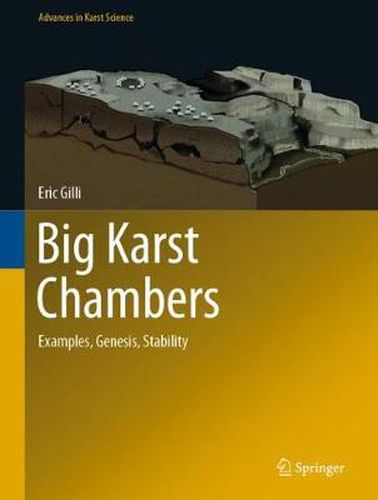Readings Newsletter
Become a Readings Member to make your shopping experience even easier.
Sign in or sign up for free!
You’re not far away from qualifying for FREE standard shipping within Australia
You’ve qualified for FREE standard shipping within Australia
The cart is loading…






This book documents and describes 32 natural caves from France and around the globe that have a width larger than 50 m, including data on the largest underground chamber in the world: Sarawak Chamber. Artificial caves are not able to be constructed at these volumes and most of these naturally forming chambers had never been surveyed before with little geological data available. Methodologies for studying these large volume Karst chambers are described and for each site, a survey, a geomorphological sketch, a description and photographic images are provided. The process of the mechanical transportation by underground running water, of an insoluble but erodible rock located below thick limestone roofs via digging, scouring and racking are explained through these example to clarify the genesis of the largest volumes in the world. The purpose of this study was to estimate whether these natural contexts could be transposed to the digging of artificial caverns to accommodate underground nuclear power plants. Indeed, the comparison of the effects of the Lucens nuclear accident with those of Chernobyl and Fukushima shows the whole interest of an underground solution. These examples of natural chambers indisputably show that this is possible.
$9.00 standard shipping within Australia
FREE standard shipping within Australia for orders over $100.00
Express & International shipping calculated at checkout
This book documents and describes 32 natural caves from France and around the globe that have a width larger than 50 m, including data on the largest underground chamber in the world: Sarawak Chamber. Artificial caves are not able to be constructed at these volumes and most of these naturally forming chambers had never been surveyed before with little geological data available. Methodologies for studying these large volume Karst chambers are described and for each site, a survey, a geomorphological sketch, a description and photographic images are provided. The process of the mechanical transportation by underground running water, of an insoluble but erodible rock located below thick limestone roofs via digging, scouring and racking are explained through these example to clarify the genesis of the largest volumes in the world. The purpose of this study was to estimate whether these natural contexts could be transposed to the digging of artificial caverns to accommodate underground nuclear power plants. Indeed, the comparison of the effects of the Lucens nuclear accident with those of Chernobyl and Fukushima shows the whole interest of an underground solution. These examples of natural chambers indisputably show that this is possible.